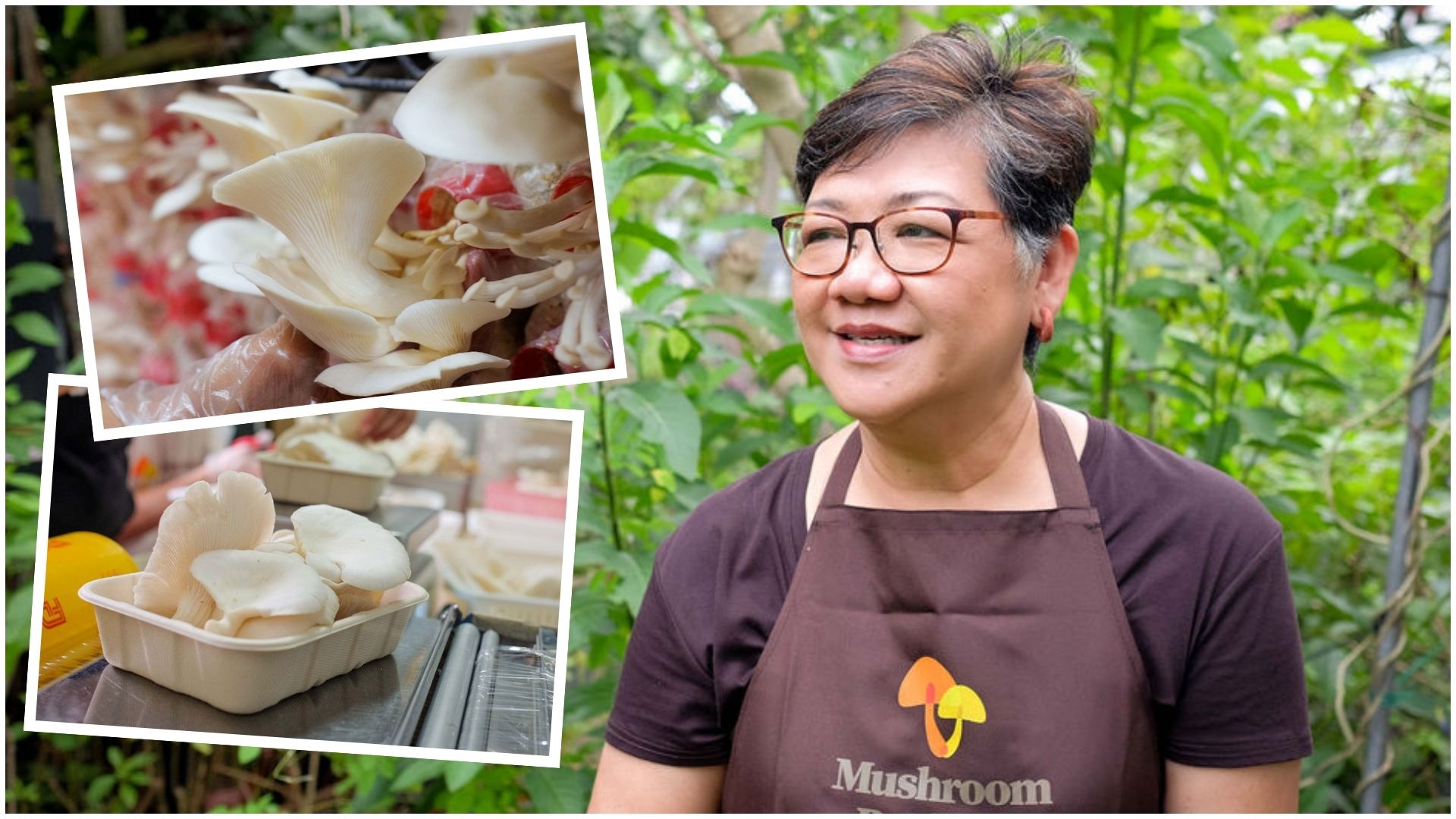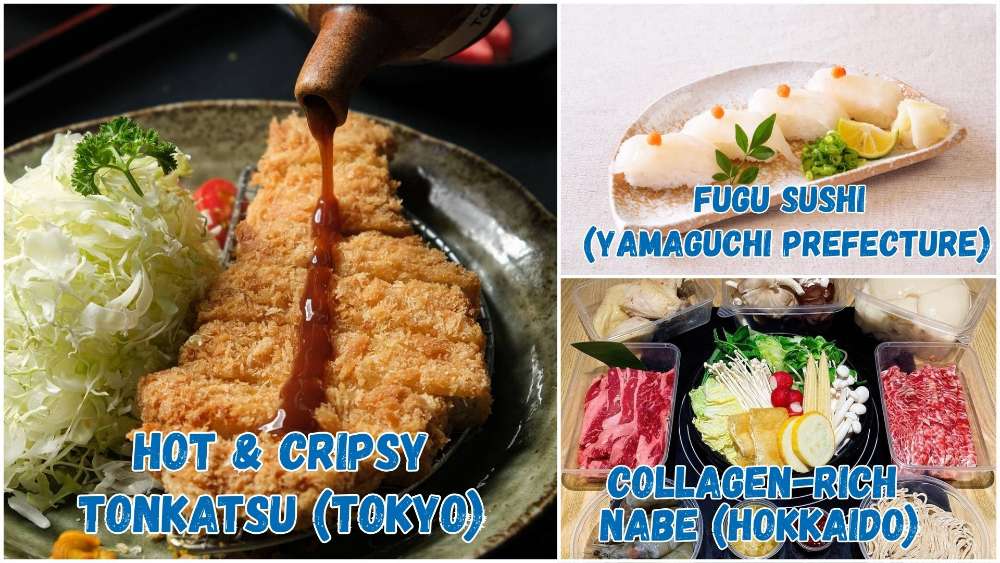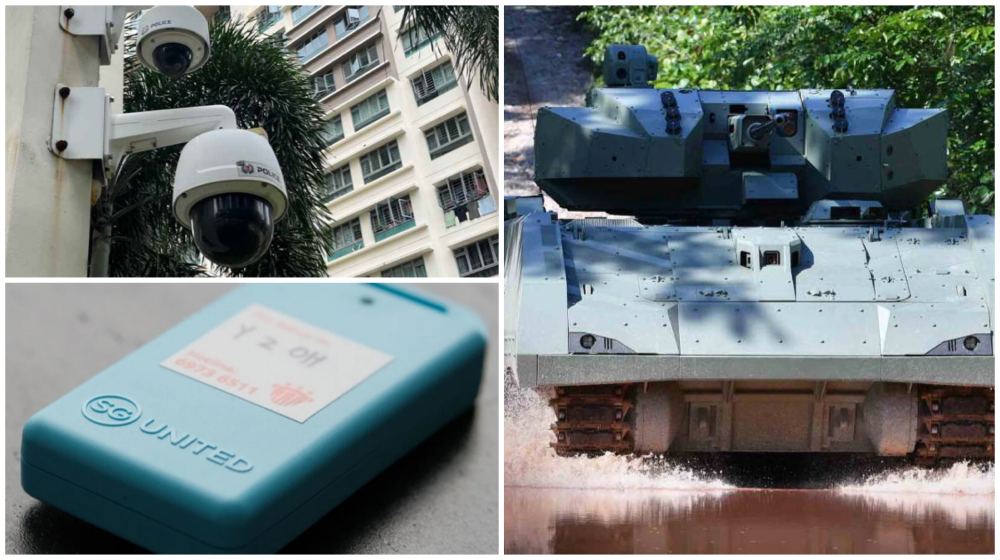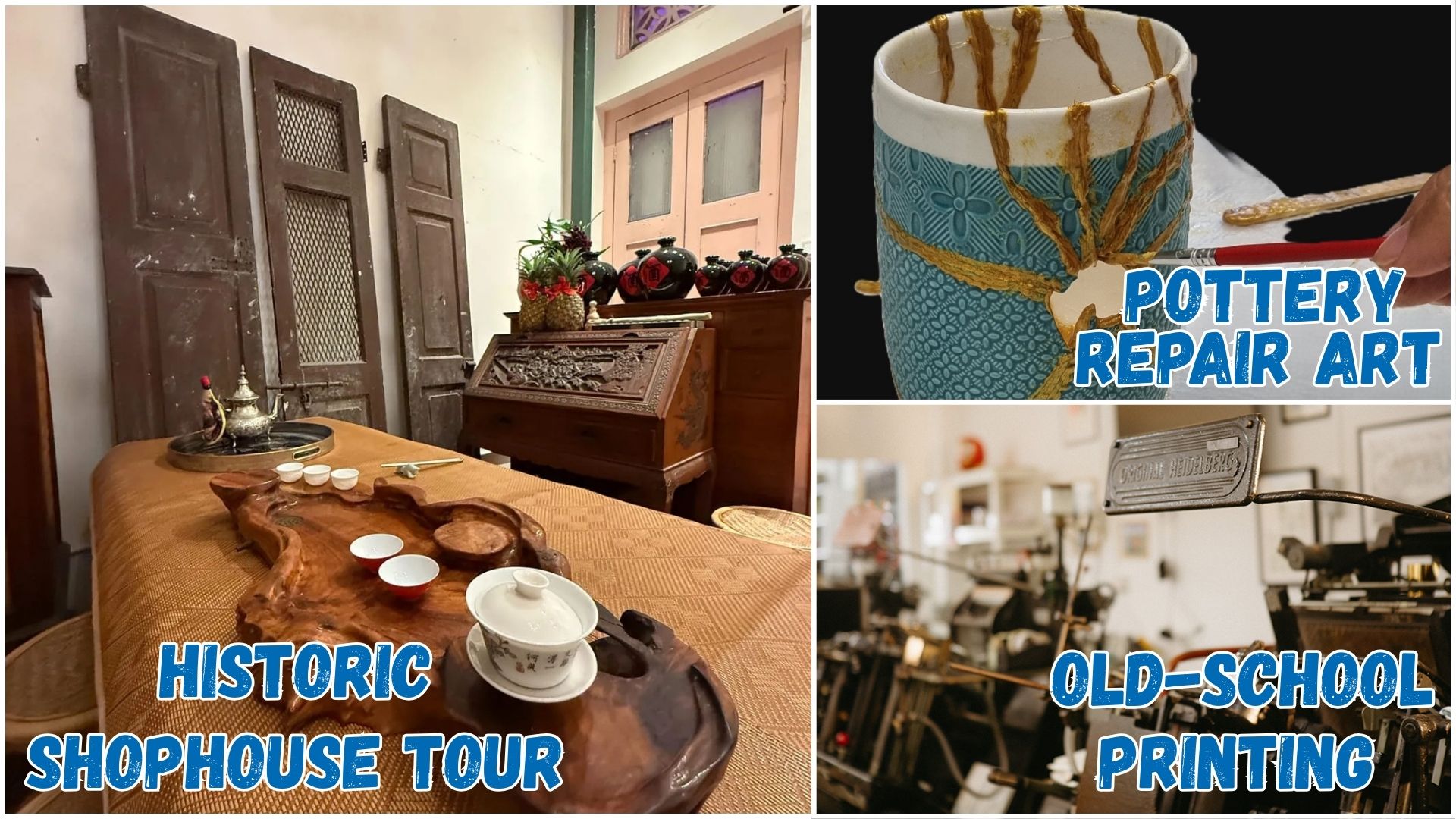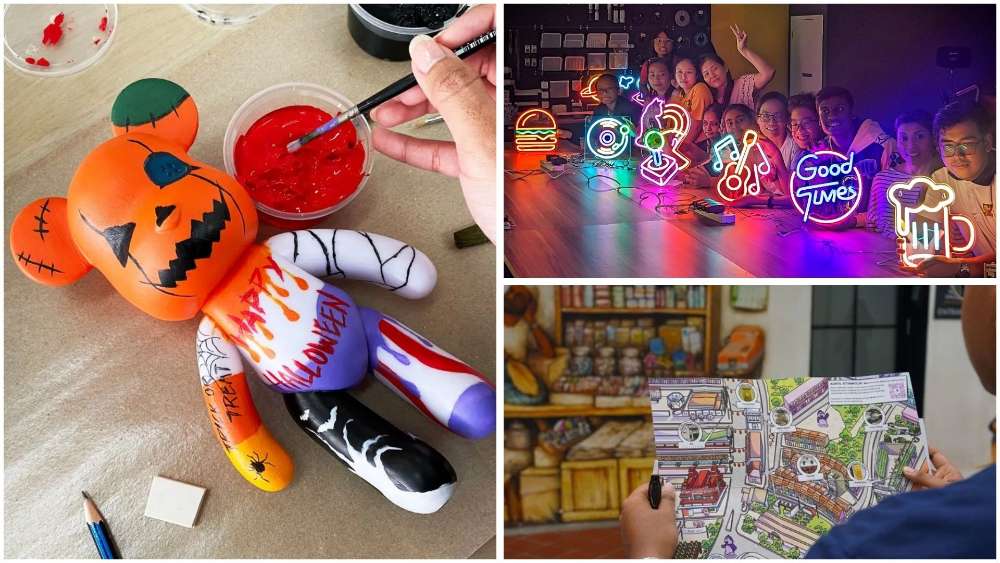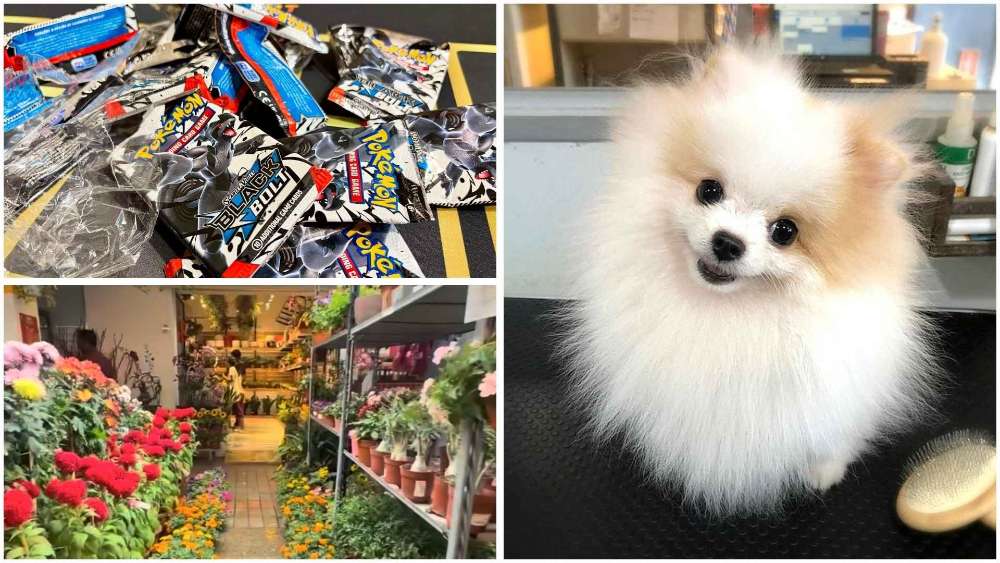Little Red Dot, Big Bold Ideas: 60 Singapore Innovations Shaping Our Future
When it comes to embracing new tech, our Little Red Dot isn’t just keeping up with the future – we’re zooming ahead. Case in point: Punggol’s set to roll out self-driving buses later this year, just one of many home-grown innovations shaping the way we live, work, and play.
To commemorate Singapore’s milestone 60th birthday, here are 60 Singapore innovations that are making the future feel a little closer to home.
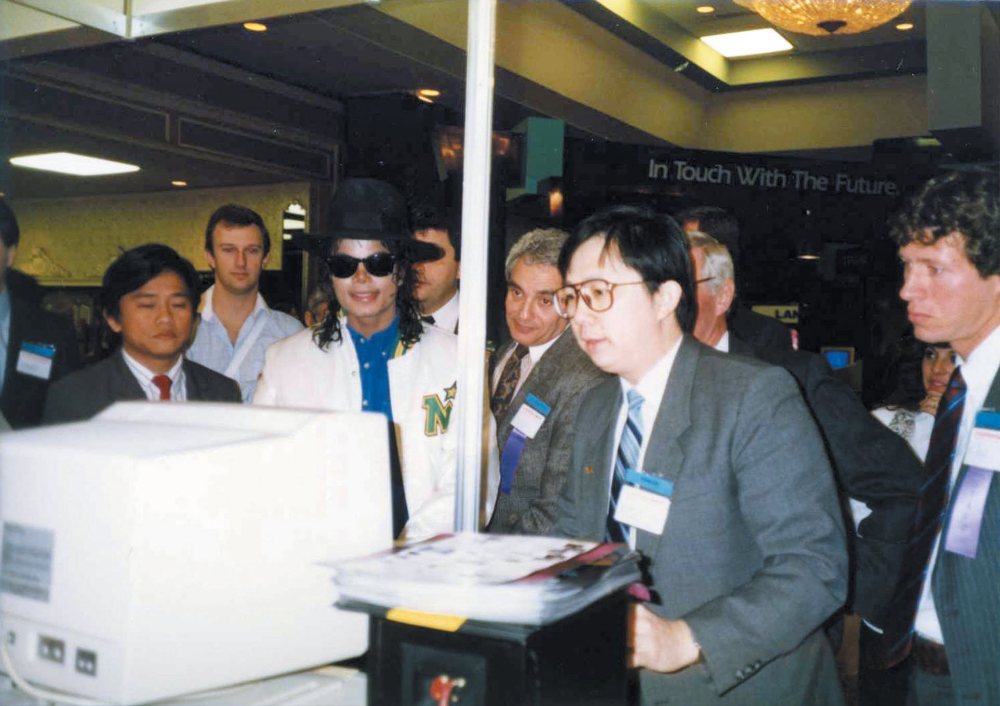 Michael Jackson at the Creative Booth in Las Vegas. | IMAGE: FACEBOOK/@CREATIVESINGAPORE
Michael Jackson at the Creative Booth in Las Vegas. | IMAGE: FACEBOOK/@CREATIVESINGAPORE
🤖 Tech & Digital Innovations
1. Creative Sound Blaster (1989)
Designed by Singapore’s Creative Technology, the Sound Blaster became the de facto standard for consumer audio on computers – even Michael Jackson was impressed!
2. DBS internet banking first in the region (1997)
In 1997, DBS became the first bank in the region to offer full internet banking, years before mobile apps were even a thing. It let users check balances and transfer money from the comfort of home.
3. Thumbdrive (2000)
Invented by Trek 2000 founder Henn Tan, the ThumbDrive revolutionised data storage by making floppy disks obsolete. With its compact design and USB plug-and-play convenience, it quickly became a global must-have.
4. SingPass (2003)
SingPass started in 2003 as a simple Government login system, but it’s now our digital key to 2,000+ Government services from taxes to CPF.
5. Wireless@SG (2006)
Launched in December 2006, Wireless@SG set up free Wi-Fi across public spaces such as train stations, libraries, and malls, long before everyone carried smartphones.
6. X-mini (2007)
Everyone had (or knew someone who had) an X-mini. The tiny, thumping speaker perfect for camps, chalets, or noisy MRT rides. You could even daisy-chain them together for DIY surround sound.
7. Carousell (2012)
Started in a school hall in 2012, Carousell became the go-to app for second-hand everything from sneakers to sofas. It helped declutter homes and launched countless side hustles.
8. Secretlab Gaming Chair (2015)
Designed in Singapore for serious gamers, Secretlab chairs boast plush cushions, elite astronaut‑approved designs, and even collabs with Marvel and Batman. They ship worldwide and dominate esports arenas from Southeast Asia to Seoul.
9. Popsical (2016)
Popsical took the big, clunky karaoke system and shrank it into a palm-sized party starter. It was founded in Singapore by three karaoke enthusiasts.
10. PayNow (2017)
Introduced on 10 July 2017, PayNow lets us send and receive money instantly using just a phone number or NRIC.
11. SGQR (2018)
Launched in 2018, SGQR unified the messy world of digital payments by combining multiple QR payment systems into one. Now hawker stalls don’t need to plaster 10 different codes, just one neat SGQR. Paying for kopi has never been so high-tech.
12. SimplyGo (2019)
SimplyGo lets you tap in and out of public transport using a credit or debit card, no need for top-ups or separate fare cards. Introduced in 2019, it made commuting, well, just tap and go lor.
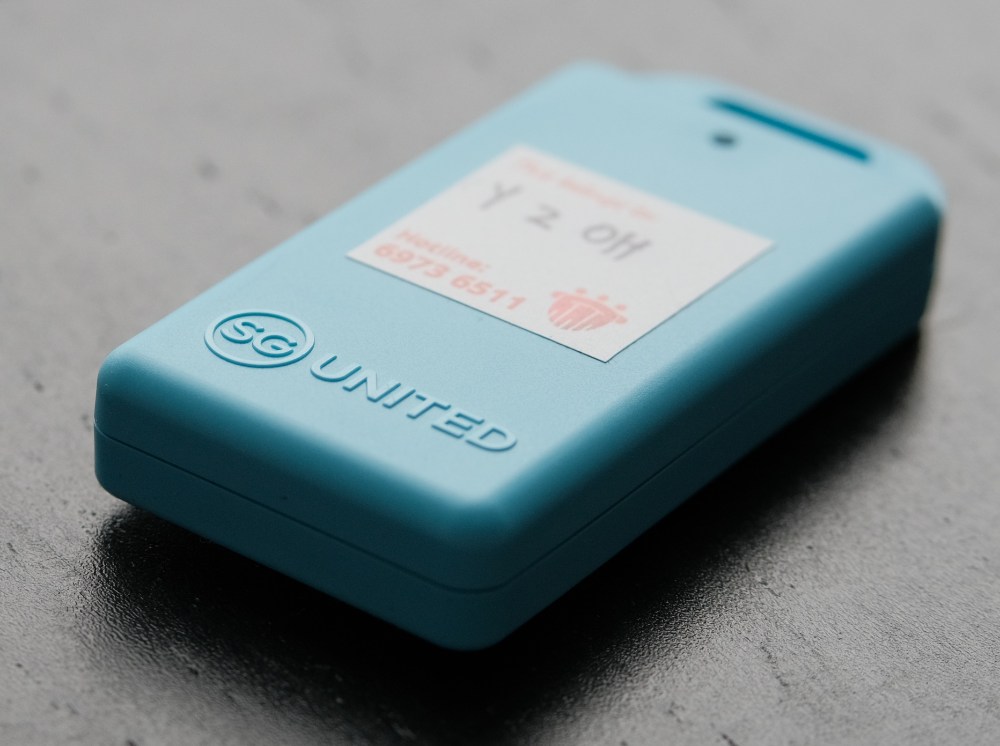 TraceTogether token. | IMAGE: UNSPLASH/@MAXOH
TraceTogether token. | IMAGE: UNSPLASH/@MAXOH
13. TraceTogether app and token (2020)
Launched in 2020, the TraceTogether app and token helped Singapore track and contain COVID-19 through Bluetooth contact tracing. It was one of the first national-scale systems of its kind.
14. Digital banks (2022)
Digital banks like Trust and GXS operate entirely online – no physical branches, just apps and easy access. They’re designed for the digital-first generation who’d rather tap than queue.
15. Digital-only birth certificates (2022)
In 2022, Singapore stopped issuing physical birth certs. Newborns now get their documentation 100% digital.
16. Remote-controlled grass-cutting robots (2023)
NParks uses robots made by Singapore company Weston Robot that can mow huge lawns on their own (okay, with a little human remote-controlled help lah).
17. Wok A.I. (2024)
Ever seen a robot cook Hokkien mee? “Wok-A.I.” at Margaret Drive uses robotic arms and sensors to stir up noodles like a pro.
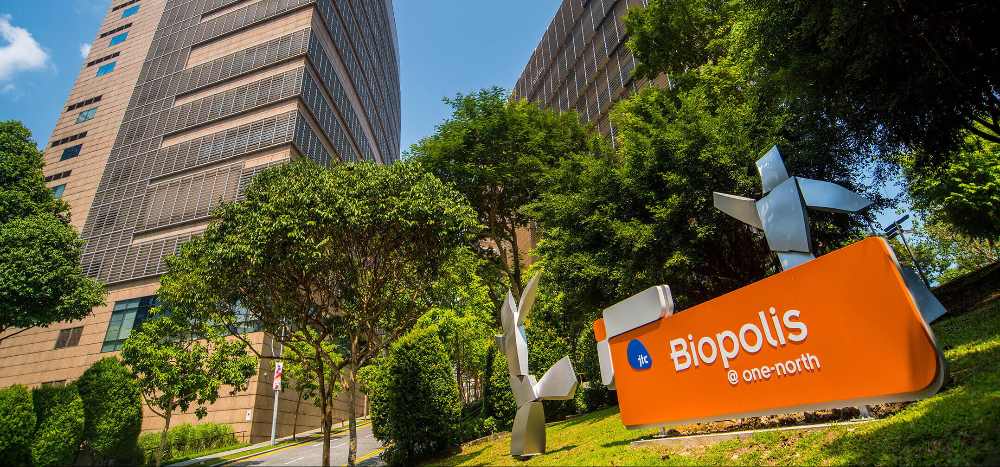 Biopolis.| IMAGE: JTC
Biopolis.| IMAGE: JTC
🏥 Healthcare & Biomedical
18. Biopolis (2003)
Singapore’s Biopolis opened on 29 Oct 2003 as a high-tech biomedical research hub for scientists, startups, and global companies. It was a bold bet to anchor Singapore’s status as a science and innovation hotspot.
19. Project Wolbachia (2016)
Started in 2016, Project Wolbachia involves releasing male mosquitoes infected with special bacteria to stop dengue-carrying Aedes mozzies from breeding – basically, a mozzie birth-0control programme.
20. Telehealth (2017)
Singapore’s telehealth platforms started in 2017 but really became essential during COVID when seeing a doctor meant logging in, not queueing. Consultations, prescriptions, MCs, all done from your bed.
21. Singapore's first robot-assisted bypass surgery (2018)
Singapore performed its first robot-assisted coronary artery bypass surgery in 2018 using the Da Vinci system. The robot allows for smaller incisions, more precision, and faster recovery for patients.
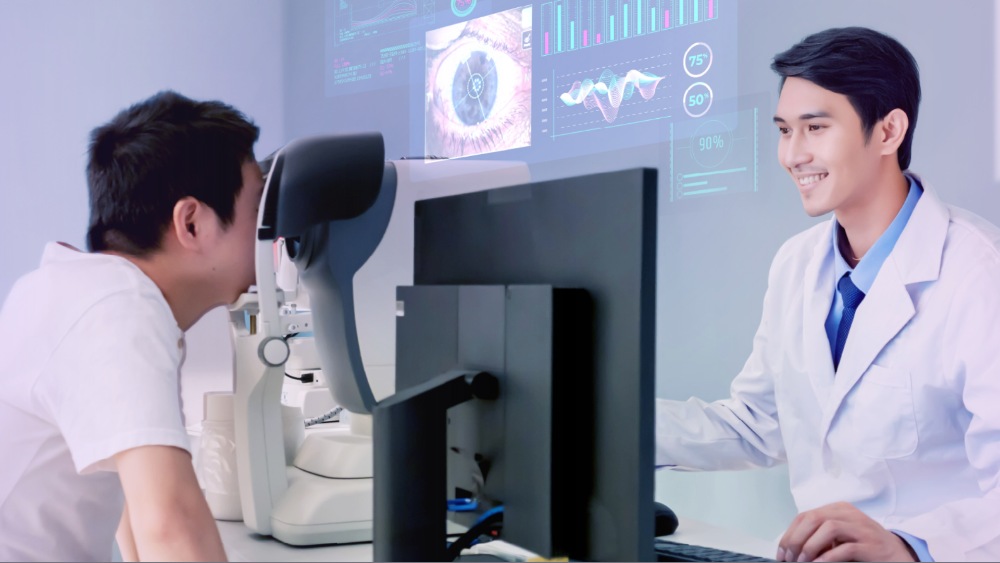 IMAGE: SYNAPXE
IMAGE: SYNAPXE
22. Singapore Eye Lesion Analyser Plus (SELENA+) (2019)
Developed in Singapore, the Singapore Eye Lesion Analyser Plus (SELENA+) uses AI to detect diabetic eye diseases from retina photos in seconds. It helps GPs identify eye issues without sending patients to a specialist.
23. First COVID-19 ART kit made in Singapore (2023)
The first Antigen Rapid Test kit for COVID-19 developed in Singapore got fast-tracked approval and was among the first home-use kits in Southeast Asia. Local diagnostics and reagents company Cellbae made testing more accessible, empowering people to take quicker health action without doctor visits.
24. Wearable AI wound monitoring patch (2023)
NUS and A*STAR scientist develop wearable wound monitoring patch, powered by AI Researchers from NUS and A*STAR created a flexible sensor patch that monitors wounds in real-time – like inflammation, pH, and temperature – and alerts doctors instantly.
25. Changi General Hospital introduces 3 robots to augment care team (2023)
CGH deployed three friendly robots in its Emergency Department to transport items, guide patients, and reduce nurses’ workload. They even bow and say “excuse me” as they pass.
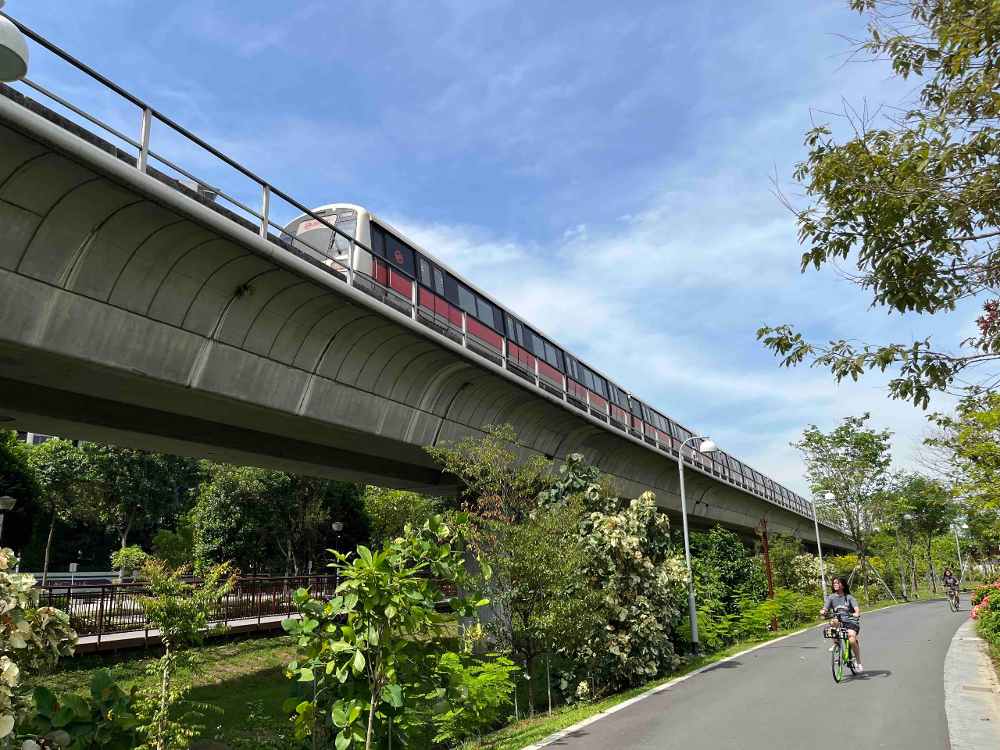 The North South Line MRT. | IMAGE: NICHOLAS YONG
The North South Line MRT. | IMAGE: NICHOLAS YONG
🚗 Transport & Mobility
26. MRT (1987)
The iconic Mass Rapid Transit (MRT) system began operations on 7 Nov 1987, transforming local travel from stuffy buses to speedy underground rides. Since then, it’s become the backbone of Singapore’s public transport, carrying millions daily.
27. SCATS/GLIDE traffic system (1988)
Singapore adopted Sydney’s Coordinated Adaptive Traffic System (SCATS) and renamed it Green Link Determining (GLIDE) in 1988 to manage traffic lights based on real-time traffic flow. No more stuck at red lights when there’s no car in sight.
28. ERP and Cashcard (1998)
Back in 1998, Singapore got ahead of the curve with the world’s first Electronic Road Pricing (ERP) and CashCard system. The ERP toll gantries dynamically adjust driving charges during peak hours, helping reduce traffic congestion.
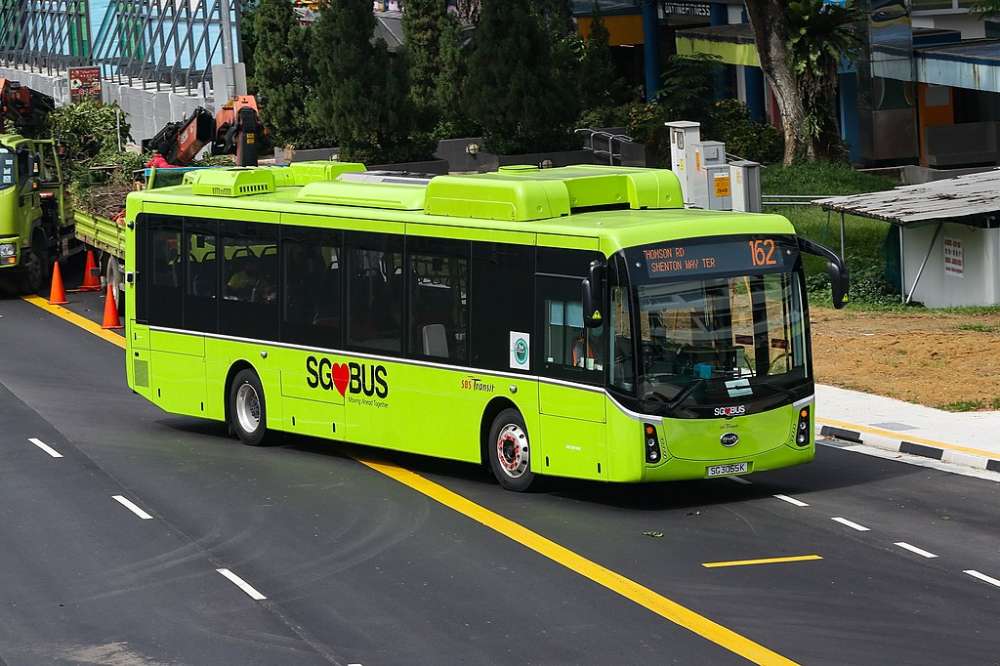 You know exactly what time the bus arrives when you use the MyTransport.SG app. | IMAGE: WIKIMEDIA COMMONS
You know exactly what time the bus arrives when you use the MyTransport.SG app. | IMAGE: WIKIMEDIA COMMONS
29. MyTransport.SG App (2011)
LTA’s MyTransport.SG app gives real-time updates on bus and train timings, parking lot availability, and road alerts. You don’t have to wait long-long at the bus stop.
30. A*STAR’s self-driving vehicle (2015)
In Jul 2015, A*STAR rolled out Singapore’s first autonomous vehicle approved for public road trials at one-north. This driverless ride, packed with sensors and AI smarts, paved the way for future mobility tech.
31. Passportless clearance (2024)
In 2024, Changi Airport rolled out full passport-free clearance using face and iris scans. Since then, we can just walk through like a boss – no more fumbling with documents.
32. Driverless buses (2026)
From mid-2026, Singapore will begin rolling out fully autonomous buses along key routes in Marina Bay, Shenton Way, and one-north. Equipped with LiDAR sensors and AI brains, these buses aim to make public transport smoother and safer.
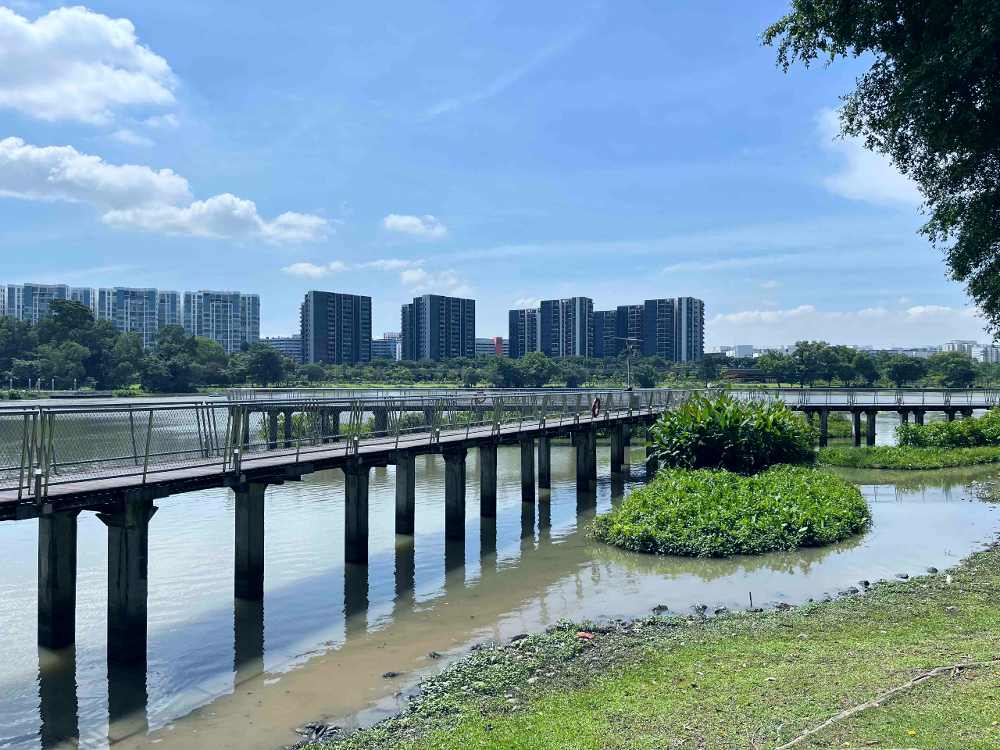 Jurong Floating Wetlands. | IMAGE: NICHOLAS YONG
Jurong Floating Wetlands. | IMAGE: NICHOLAS YONG
🌱 Sustainability & Green Tech
33. Jurong Lake and Sengkang floating wetlands (2011)
These man-made floating wetlands are anchored in places like Jurong Lake and Sengkang to clean water, cool the surroundings, and attract wildlife. They act like natural filters and habitats for birds and dragonflies.
34. Sky Greens (2012)
Sky Greens opened the world’s first commercial vertical farm on 24 Oct 2012 – growing leafy greens in rotating towers using just a trickle of water. It saves land, energy, and makes “urban farming” look futuristic.
35. Eco-link@BKE (2013)
Completed in 2013, the Eco-Link@BKE is a 62m-long bridge for wildlife to cross between Bukit Timah and the Central Catchment. It lets animals move safely above expressway traffic – basically a green corridor in the sky. Finally, a way for pangolins to get right of way!
36. Airbitat Smart Coolers (2017)
You’ve probably seen Airbitat’s coolers quietly blasting cold, humid-free air at the National Day Parade, the Singapore Zoo, or Sentosa. Unlike fans or air-cons, these energy-efficient machines cool you down without drying you out.
37. Huber’s Butchery – first supermarket in the world to sell cultivated meat (2022)
Huber’s Butchery made history as the first supermarket globally to serve and sell cultivated meat – meat grown in labs through a partnership with Good Meat under the US-based food tech firm Eat Just.
38. Smart Water Meters for HDBs (2022)
The first 300,000 smart water meters were installed from early 2022 to digitalise the water system. Users can monitor water usage and leaks. It’s free to install in your home!
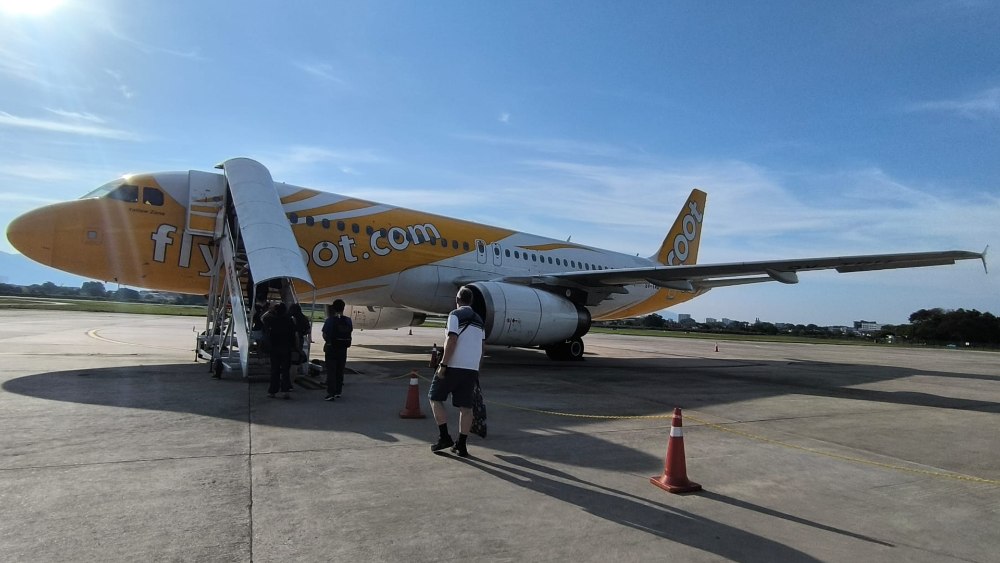 Passengers boarding the Scoot flight at Sultan Azlan Shah Airport, Ipoh, Malaysia. | IMAGE: JAY PANG
Passengers boarding the Scoot flight at Sultan Azlan Shah Airport, Ipoh, Malaysia. | IMAGE: JAY PANG
39. SIA and Scoot to use sustainable aviation fuel (2023)
Singapore Airlines and Scoot became the first carriers at Changi Airport to use Sustainable Aviation Fuel produced at Neste’s Singapore refinery. This fuel reduces carbon emissions up to 80% – a major win for greener skies.
40. Tengah centralised cooling (2024)
Tengah, Singapore’s newest HDB town, became the first township to ditch traditional air-con units for a centralised cooling system that’s more energy-efficient and climate-friendly. Cool town, literally.
41. Floating solar systems by PUB (2024)
PUB’s floating solar installations, like the ones at Tengeh and Bedok Reservoirs, harness the sun's energy while preserving land space. These solar farms help power our grid with green energy and reduce water evaporation.
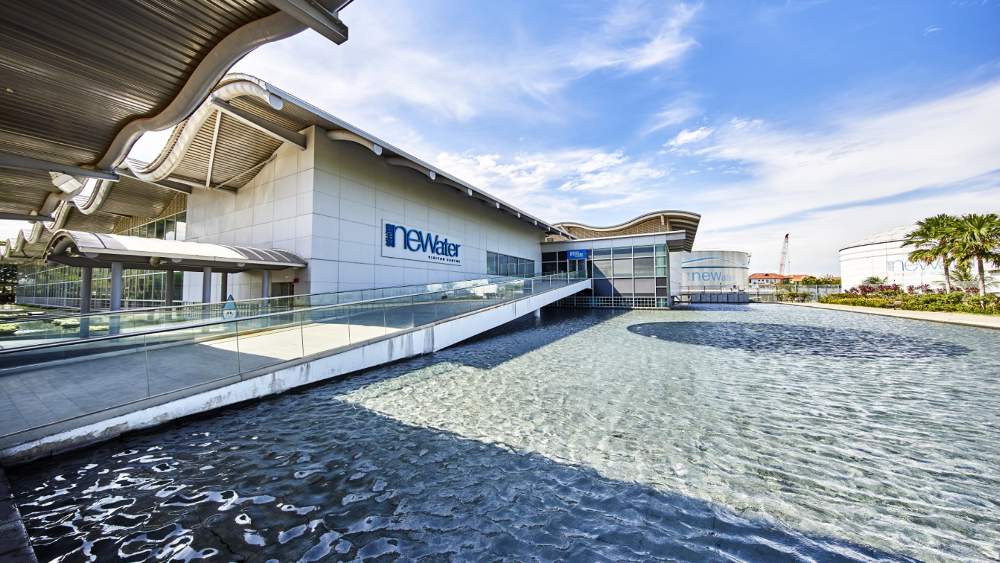 The NEWater Visitor Centre (NVC) at 20 Koh Sek Lim Rd closed last year. | IMAGE: PUB, Singapore’s National Water Agency
The NEWater Visitor Centre (NVC) at 20 Koh Sek Lim Rd closed last year. | IMAGE: PUB, Singapore’s National Water Agency
🏠 Smart Nation & Infrastructure
42. CPF (1955)
The Central Provident Fund (CPF) was introduced in 1955 to help Singaporeans save for retirement, housing, and healthcare. It’s a compulsory savings scheme, but ask any Singaporean and they’ll say, “It’s complicated lah.” Still, it’s one of the pillars of our financial safety net.
43. NEWater (2003)
Launched in 2003, NEWater is ultra-clean recycled water that’s been treated using advanced membrane tech and UV disinfection – so pure it can be used in electronics factories and for drinking.
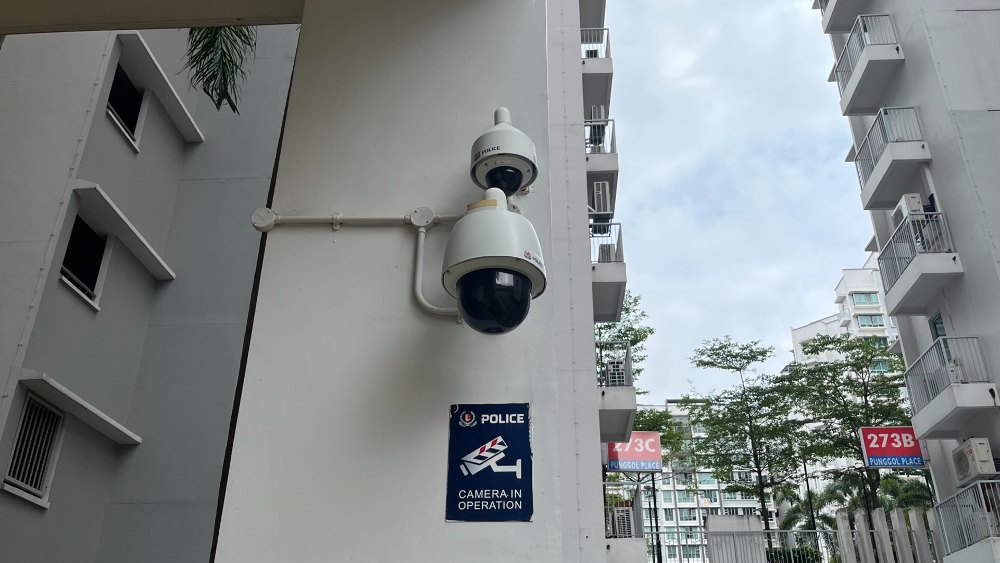 PolCams are everywhere around you. | IMAGE: NICHOLAS YONG
PolCams are everywhere around you. | IMAGE: NICHOLAS YONG
44. PolCam (2012)
Introduced in 2012, PolCam (Police Camera) has quietly become a cornerstone of Singapore’s neighbourhood safety. To date, there are more than 90,000 PolCams in public areas around the Lion City, and they have helped solve over 7,500 crime cases.
45. Smart HDB Town framework (2014)
HDB’s Smart Town Framework, introduced in 2014, aims to create more liveable, efficient towns with tech such as smart lighting, pneumatic waste systems, and real-time data dashboards.
46. SkillsFuture (2015)
Launched in 2015, SkillsFuture gives Singaporeans credits to upskill or try something new, from coding to cocktail-making.
47. Punggol Digital District (2025)
The Punggol Digital District is Singapore’s very own Silicon Valley. It’ll house tech companies, a smart university campus, and AI-integrated everything.
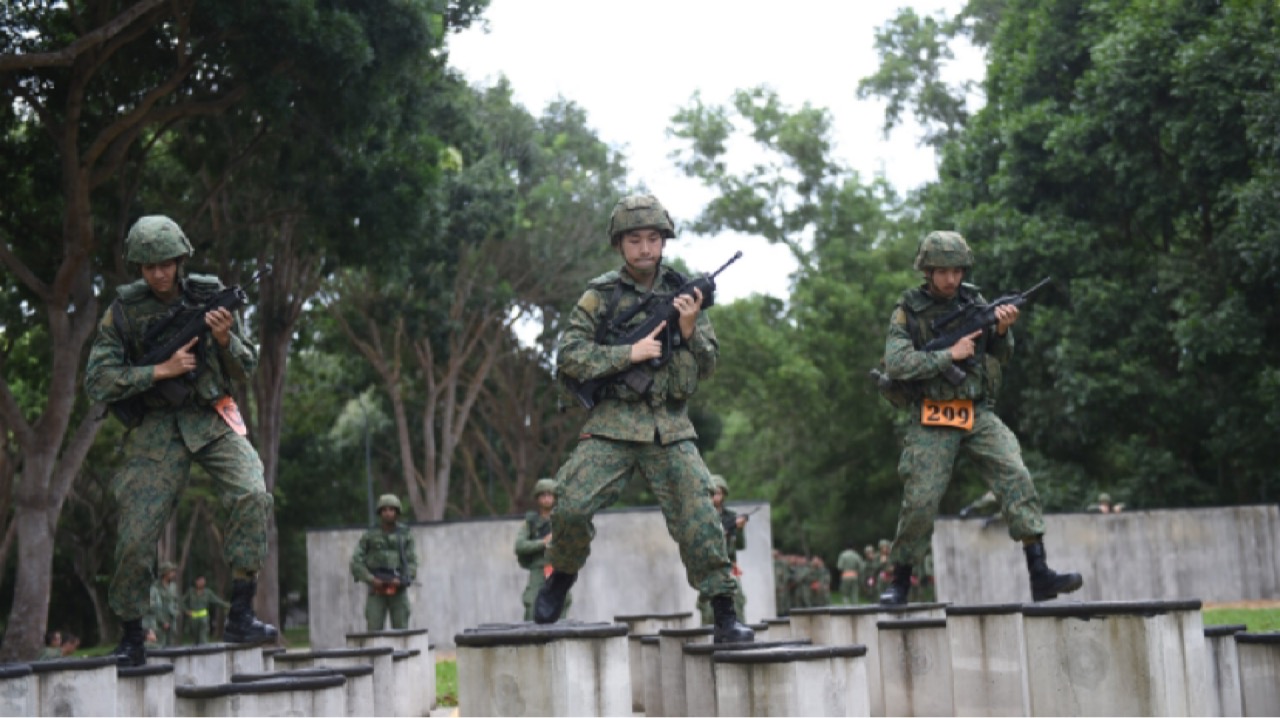 Recruits going through the Standard Obstacle Course with the SAR 21. | IMAGE: PIONEER
Recruits going through the Standard Obstacle Course with the SAR 21. | IMAGE: PIONEER
🛡️ Defence & Security
48. SAR 21 (1999)
The Singapore Assault Rifle 21 (SAR 21) is our home-grown standard-issue weapon for Singapore Armed Forces (SAF) troops, designed for better ergonomics and accuracy. It’s compact, reliable, and even has a built-in scope.
49. Underground ammunition storage facility (2008)
In 2008, Singapore opened one of the world’s first large-scale underground ammo storage facilities, hidden deep beneath a hill. It frees up precious land and keeps things super secure.
50. Terrex Infantry Carrier Vehicle (ICV) (2009)
The Terrex ICV rolled out in 2009 as a high-tech, all-terrain vehicle for SAF soldiers. It’s armoured, amphibious, and comes with high-end battlefield systems.
51. SPYDER Air Defence System (2011)
Singapore’s SPYDER (Surface-to-air PYthon-5 and DERby) ground-based air defence system can detect and shoot down aerial threats like drones or missiles in seconds. It’s basically our island’s real-life missile shield – fast, precise, and always on guard.
52. Singapore Navy's Littoral Mission Vessel (LMV) (2015)
The Republic of Singapore Navy launched its first LMV on 3 Jul 2015, designed for flexibility and speed in coastal defence. Thanks to automation, it needs a smaller crew.
53. SAF Smart Camp (2018)
SAF Smart Camp is transforming military life with tech-powered upgrades – from mobile apps for admin and training info, to smart cookhouses, automated equipment access, and AR-assisted workshops for greater convenience and efficiency.
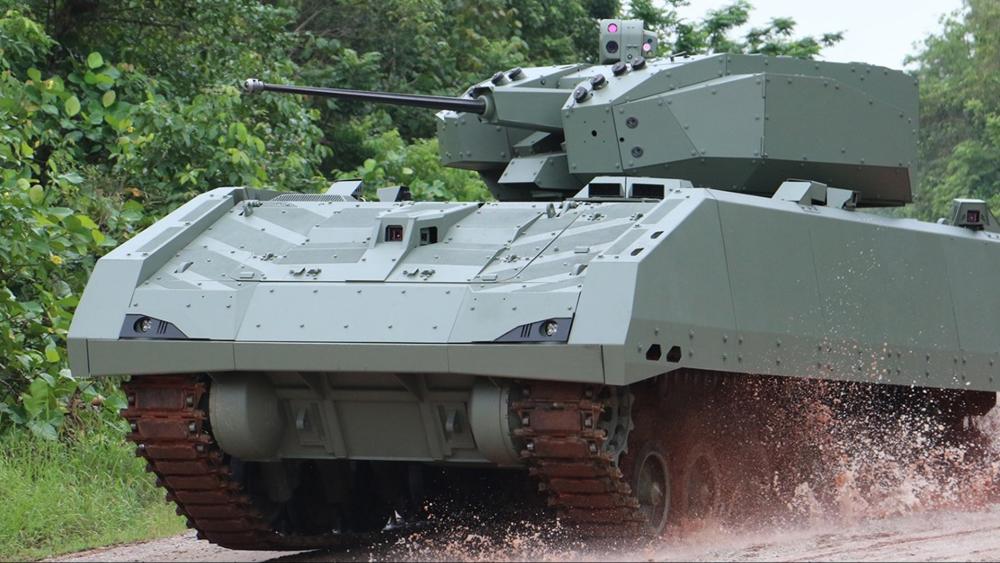 The Hunter AFV in action, built for the modern battlefield and the tropical heat. | IMAGE: ST ENGINEERING
The Hunter AFV in action, built for the modern battlefield and the tropical heat. | IMAGE: ST ENGINEERING
54. Hunter Armoured Fighting Vehicle (2019)
The Hunter is Singapore’s first fully digital armoured vehicle, packed with sensors and touchscreen controls. It also comes with modern comforts like air-conditioning, something that wasn’t standard in its predecessors. Now, that's cool!
55. RSAF to acquire eight F-35A jets (2024)
With plans to acquire 8 F-35A jets, the Republic of Singapore Air Force (RSAF) is complementing the previously announced purchase of 12 F-35Bs, replacing ageing F-16s. These stealth fighters come with cutting-edge tech. 56. Formation of Digital and Intelligence Service (DIS) (2022) In 2022, Singapore formed the DIS as the fourth arm of the SAF, focusing on cyber defence, data ops, and digital warfare.
57. Two new Commands in DIS (2025)
To boost its capabilities, DIS established two new commands: the Defence Cyber Command (DCCOM) and SAF C4 & Digitalisation Command (SAFC4DC), to defend Singapore from increasingly frequent and sophisticated cyber threats happening globally.
58. Maritime Security Unmanned Surface Vessel (2025)
The RSN’s first autonomous maritime patrol vessel began patrols in January this year, boosting surveillance and operational response to Singapore’s maritime security system. These vessels also allow the RSN to remotely and safely conduct potentially risky missions at sea.
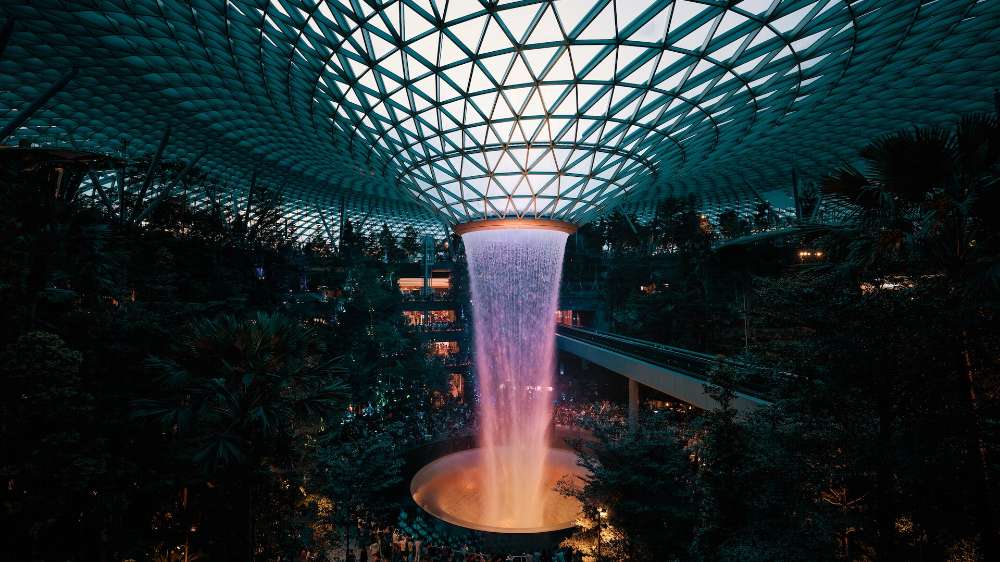 The Rain Vortex at Jewel Changi Airport. | IMAGE: UNSPLASH
The Rain Vortex at Jewel Changi Airport. | IMAGE: UNSPLASH
🏙️ Architecture & Landmarks
59. SkyPark Infinity Pool (2011)
Perched atop Marina Bay Sands, the SkyPark infinity pool opened in 2011 and became an instant icon. It’s the world’s largest rooftop infinity pool, with killer views of the city skyline.
60. The Rain Vortex at Jewel Changi (2019)
The Rain Vortex at Jewel Changi Airport is the tallest indoor waterfall in the world, standing at a jaw-dropping 40m. Surrounded by lush greenery, it’s part shopping mall, part rainforest, and part tourist magnet.
For the latest updates on Wonderwall.sg, be sure to follow us on TikTok, Telegram, Instagram, and Facebook. If you have a story idea for us, email us at [email protected].
